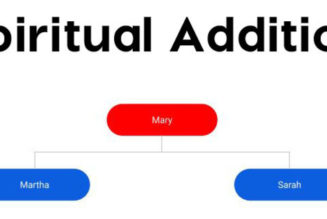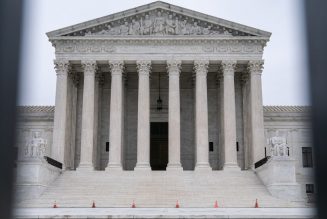
Pro-life activists and scholars — with nearly 50 years of experience reaching, striving, yearning for the best possible arguments to undercut the patently unconstitutional “law” declaring abortion a constitutional right — could find much to celebrate, much to mourn in the oral arguments heard today at the U.S. Supreme Court about whether to overrule Roe v. Wade and the case that largely affirmed it, Planned Parenthood v. Casey.
Three attorneys presented in the case of Dobbs v. Jackson Women’s Health Organization on the question of whether Mississippi should be allowed to ban abortions after 15 weeks of pregnancy: the solicitor general of Mississippi in favor of overturning Roe and Casey; and attorneys from the Center for Reproductive Rights and the United States’ Solicitor General’s Office on behalf of retaining both cases. The Justices’ questions, as usual, revealed some of their leading concerns; I will present these in order of their importance to the Court’s ultimate decision, which is not expected until late June of 2022.
Stare Decisis
Stare decisis is the legal principle that a court should adhere to its precedent (prior decisions) when crafting later decisions. In today’s argument, the attorneys and Justices openly supporting legal abortion (Justices Breyer, Kagan and Sotomayor) claimed not only that the Court should adhere to Roe and Casey as precedents, but also that any failure to do so would allow the nation to rightly accuse the Court of playing politics.
They made three additional, important points about stare decisis: First, both Justice Breyer and the abortion advocates suggested that abortion rights constitute a “super precedent,” because they were affirmed not only in Roe, but also in a second decision, Casey.
Second, they claimed that Casey quite carefully and thoroughly examined every “element” of stare decisis (e.g., that a case was rightly decided at the outset; that it has bred “reliance interests” such that disturbing it is harmful; that the rules it announced have been accepted by the nation and have proved “workable.”) Finally, abortion advocates argued that “nothing has changed” since Casey upheld the central holding of Roe, meaning that the Court has no right or reason to reexamine the right of abortion at this time.
Obviously, several Justices and Mississippi disagreed.
Mississippi effectively showed that Casey devoted only a tiny number of paragraphs to the stare decisis question, reasoning largely instead that public perception of the Court would be diminished if it appeared to cave in to pro-life pressure. This is not an accepted constitutional argument. Mississippi, along with Justice Kavanaugh, also highlighted a significant number of cases in which the Court had reversed itself, and in so doing — especially in the Brown v. Board of Education case overruling the Plessy v. Ferguson decision, which had permitted “separate but equal” treatment of Black Americans — preserved what the nation came to understand as true and good, without damaging the Court’s reputation in the least. Just the contrary, in fact.
Mississippi again and again came back to its argument that Roe was wrongly decided at its inception and that this, above all, requires the Court to overturn it. Repeatedly, Mississippi reminded the Court that there was nothing in the text, history or tradition of the Constitution, or American laws, pre-Roe, to suggest that the 14th Amendment’s “liberty” guarantee included the right to kill children in the womb.
A Domino Effect?
It was also clear that all the attorneys and Justices were concerned about what overturning Roe and Casey might mean for other constitutional rights that appear nowhere in the text of the Constitution, but that the Court has nonetheless pronounced, based upon the 14th Amendment’s “liberty” guarantee: the right to homosexual sex and the right to same-sex marriage in, respectively, the Lawrence and Obergefell cases.
Mississippi took pains to assure the Court that these rights could be preserved even as Roe was jettisoned because both cases announced clear and workable rules that lower courts and legislatures could follow (i.e., no criminalizing sodomy; no banning same-sex marriage). Mississippi contrasted these rules with the Casey rule: “no abortion law creating an ‘undue burden’ on the abortion right before viability.” The Supreme Court and lower courts have sharply disagreed among themselves time after time about what these rules require.
Mississippi is quite mistaken on this point, though I understand from the point of view of the single-minded advocate why they argued as they did. In fact, however, Roe, Casey, Lawrence and Obergefell all depend upon Justices “finding” in the U.S. Constitution a “right” that is not only found nowhere in the text, but which also 180-degrees contradicts the history and tradition of the United States. “History and tradition” are the Court’s own guidelines for whether or not they must recognize a claimed right as a 14th Amendment “liberty” interest.
Women’s Lives
Abortion advocates relentlessly claimed that women’s physical, emotional, financial and social well-being depended very much on access to abortion. They argued, therefore, that abortion is a crucial guarantee of women’s privacy, autonomy and liberty. Again and again, Justice Thomas pushed the abortion advocates to specify which particular constitutional guarantee they were relying on — abortion specifically? privacy? autonomy? — but the advocates refused to specify. This suggests that Justice Thomas may write that the 14th Amendment’s broad guarantee of “liberty” is simply too unspecified to provide firm ground for a specific right to extinguish the life of an unborn human being.
Mississippi and Justice Barrett devoted significant time to the argument that 50 states’ “safe-haven laws” — allowing women without legal penalty to leave a baby for later adoption in specified locations — undercut the argument that women need abortion to avoid parenting. This led abortion advocates to reply that being pregnant and giving birth alone are too dangerous and awful for women, as is the process of deciding to give a child to other parents in adoption. They insisted — as did Justice Sotomayor in one of her very long and rambling speeches cutting dramatically into Mississippi’s argument time — that giving birth is up to 75 times more dangerous than abortion. There is no evidence whatsoever for such claims.
A New Legal Standard? Not Viability and “Undue Burden” Analysis?
Currently, Roe and Casey require states’ abortion laws to avoid “undue burdens” on women. After viability, states can theoretically ban abortion, but must allow abortions for “health” reasons. The Court has included emotional and psychological distress over pregnancy and parenting to be a “health” reason.
The Justices in both camps repeatedly asked the attorneys whether the Court might uphold existing abortion rights but announce another legal standard. Mississippi insisted that the Constitution has nothing to say about any standard; Justice Roberts echoed this in part by repeatedly quoting from papers of the lead author of Roe (Justice Blackmun) calling even the current viability standard “dicta” and “arbitrary.”
For their part, abortion advocates insisted that “viability” is a clear line, because the child can live outside the womb at that point. They ignored medical breakthroughs and uncertainly about the precise timing of viability.
Where Are the Justices? And Other Final Thoughts
Based strictly upon the oral arguments, it is clear that Justices Sotomayor, Breyer and Kagan will vote to uphold abortion rights; Sotomayor because she is personally, intensely in favor of abortion rights, and willing to use even blatantly unsupported “data” to make the case; Kagan because — though she is curious about the possibility of a different standard, not found in Casey — she seems to think that no new arguments for overruling Casey have arisen since that case was decided; and Breyer because he thinks abortion rights are a “super precedent,” thoroughly examined and resoundingly affirmed in Casey.
It is more difficult to pronounce where the remaining Justices might fall, but their comments were largely promising. Justice Kavanaugh dwelt on the Court’s having correctly overturned all sorts of bad precedents before and how overruling Roe and Casey would simply return the decision to the states. The Supreme Court’s ruling would, in other words, make the Constitution “neutral” on abortion.
Justice Roberts expressed tremendous skepticism that a “viability” standard has any constitutional foundation and noted how extreme the United States was compared to any countries, save China and North Korea. On the other hand, he seemed fearful of a decision that might undercut existing constitutional rights to homosexual sex and same-sex marriage and stressed again and again that a 15-week ban provides plenty of time for women to seek an abortion if that’s what they want to preserve their freedom.
Justice Barrett was concerned to retain respect for stare decisis, but returned often to the matter of women’s ability to avoid childrearing today due to laws passed post-Roe allowing “safe haven” for abandoned newborns and their mothers. Justice Alito was intensely skeptical that the country ever had a “history and tradition” of legal abortion, sufficient to render it a federal constitutional right, and concluded that it is possible for the Court to overrule cases simply on the basis of their being egregiously wrong.
Justice Gorsuch suggested that it is hard to find a constitutional and workable principle that would allow the Court to draw lines between protected and unprotected abortions, the viability line and the undue-burden standard included. And Justice Thomas forced abortion advocates to confront the ramifications of their “autonomy” argument, which, he hypothesized, would allow women to ingest dangerous drugs during pregnancy without the state being allowed to express concern for the unborn child.
In sum, the oral argument was promising for the pro-life cause, but it would be impossible to cram into the few minutes of an oral argument all the reason, facts, principles, analyses — and hopes — of 50 years of pro-life argumentation. There was no time to call out abortion advocates’ lies, more lies, and made-up statistics. No time to show that women have not depended upon abortion for their dignity and freedom, but that the opposite is true. No time to detail the miraculous, the beautiful humanity of the unborn.
God willing, the briefs of Mississippi and dozens of “friends of the court” will fill in the gaps and the right decision will issue next June.
Join Our Telegram Group : Salvation & Prosperity








